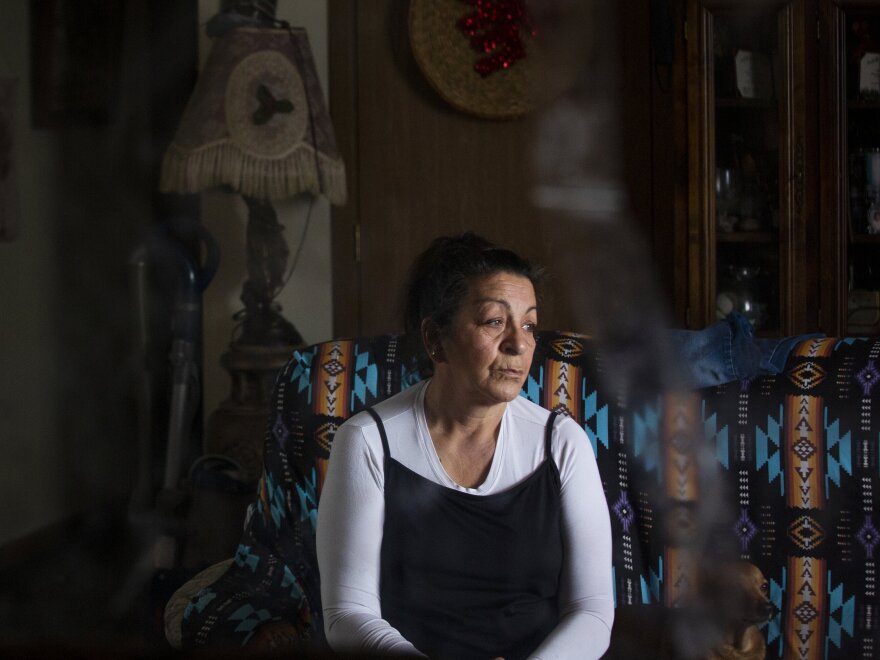At least 19 people have died in tribal jails overseen by the federal government since 2016, according to an by NPR and the Mountain West News Bureau. As part of our ongoing coverage of mistreatment of inmates on reservations, the bureau is highlighting some of the victims and the circumstances around their deaths, which reflect decades of mismanagement, neglect and poor training. You can find more stories . This series is supported by the Pulitzer Center.
It was a typically muggy, hot June day in 2004 in Washington, D.C., when Inspector General Earl Devaney sat down in front of senators on Capitol Hill.
The Iraq War was raging. Then-President George W. Bush was in a heated battle for re-election. But on this day, lawmakers on the Senate Committee on Indian Affairs were about to hear troubling testimony about the more than 70 detention centers overseen by the Bureau of Indian Affairs.
“BIA’s detention program is riddled with problems and, in our opinion, is a national disgrace with many facilities having conditions comparable to those found in third world countries,” Devaney said.
An investigation by his office found more than 800 serious incidents at these jails. They included deaths, attempted suicides and escapes. One man was found hanging in his cell after being left unmonitored for two hours.
On the Yakama Reservation in Washington state, investigators found a woman who was confined in a windowless cell. She hadn’t seen daylight for nearly two weeks. Devaney said the conditions were a violation of basic civil rights.
“Nothing less than a herculean effort to turn these conditions around would be morally acceptable,” he said.
Later that year, senators introduced legislation reforming the corrections program, but it failed to pass. Over the next two decades the BIA introduced a new policy handbook and replaced a third of its jails.
But an discovered that problems still persist and inmates are still dying at roughly the same rate as they did in 2004. Conditions at some jails remain abysmal. Patterns of negligence, poor training and a lack of medical personnel on site led to at least 19 deaths within detention centers overseen by the Bureau of Indian Affairs since 2016.
“There basically hasn’t been any major improvement,” said Ed Naranjo, a former BIA official and whistleblower who helped spur the 2004 investigation. “There are not enough resources and people to address those issues. So as a result, nothing is done.”
That inaction cost a 22-year-old grocery store worker named Willy Pepion his life.
‘I Get Really Angry’
Pepion’s mom, Wilma Fleury, is sitting at her dining room table at her home on the Blackfeet Reservation in north-central Montana. It’s been more than a year since Pepion died at the BIA-operated jail on the reservation, in May 2020. His mom has taken down all of his pictures. They’re tucked away in a closet because seeing them is too painful.
“My one friend told me, ‘Some days, Wilma, you’ll feel like you’re going crazy,'” she said. “So when I start feeling like that I usually go outside and take a walk. Be by myself. But then I get really angry.”
She’s angry because of how her son died. Pepion was at a house when a fight broke out and someone hit him in the head with a shovel. When police arrived they arrested him. He was taken to a hospital where doctors cleared him to spend the day in jail. But they missed a serious injury. The shovel had cracked his skull. No one from the hospital would answer requests for comment from the Mountain West News Bureau. When police took him to the jail he had dried blood on his face.
“He asked the jailer, ‘I need help. I need help,’” said Frederick Noon Jr., who was in jail with Pepion that day. “I was like, ‘Hey, this guy needs help, he's pretty sick.’ And she was like, ‘Lay down, go pass out.’”
Federal policy says guards are supposed to take someone to a health clinic if they ask for help like Pepion did. But records show correctional officers never brought Pepion back to the hospital. For the next few hours, Noon recalled, Pepion was in pain.
“He wouldn’t let his head touch the pillow,” Noon said. “It was like he was protecting his head. He looked like a little baby, falling asleep and just bobbing his head up and down, moaning and groaning.”
Federal policy also requires guards to personally check on inmates every thirty minutes. They look for signs of life. But at the Blackfeet jail, Pepion’s body wasn’t discovered until nearly three hours after he died.
BIA officials declined to comment when the Mountain West News Bureau asked about the circumstances surrounding Pepion's death.
Fleury said she was calling all day to find out when her son was going to get out of jail. She just thought he was in there for being drunk. The guards kept telling her he’d be released once he was sober. But then, that evening, a sheriff’s deputy showed up at her door. He told her Pepion was dead.
“That’s my boy,” she said, crying. “That’s my youngest kid.”
Pepion died on Mother’s Day.
After months of repeated written questions and public records requests from NPR and the Mountain West News Bureau, Interior Department officials said they now plan to contract with an outside agency to examine the troubles plaguing the detention centers.
This story was produced by the Mountain West News Bureau, a collaboration between Wyoming Public Media, Nevada Public Radio, Boise State Public Radio in Idaho, KUNR in Nevada, the O'Connor Center for the Rocky Mountain West in Montana, KUNC in Colorado, 91���� in New Mexico, with support from affiliate stations across the region. Funding for the Mountain West News Bureau is provided in part by the .
Copyright 2021

